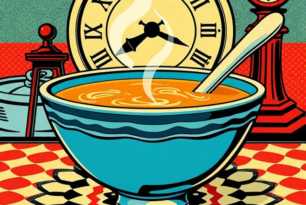The cheese and butter aisle might seem harmless—comforting, even—but it can be a nutritional minefield, especially for older adults and individuals managing obesity. While these creamy favorites are packed with flavor, they often come loaded with saturated fats, sodium, and hidden calories that can sneak into your diet and impact your health over time.
If you’re trying to stay heart-healthy, mobile, and energized as you age—or manage weight and blood pressure—here’s what to watch for next time you’re browsing the dairy shelves.
Cheese: Delicious, But Dense
What to be cautious about:
- High saturated fat: Many cheeses—especially hard and aged varieties like cheddar, gouda, or brie—are high in saturated fat, which can raise LDL (bad) cholesterol and increase the risk of heart disease.
- Sodium overload: Some cheeses can contain over 400mg of sodium per ounce, a concern for those with high blood pressure or heart issues.
- Portion pitfalls: It’s easy to underestimate how much you’re eating. A single ounce of cheese is about the size of two dice—much smaller than the average slice on a sandwich or in a casserole.
Tips for smarter choices:
- Look for “light” or “reduced-fat” cheese options.
- Try part-skim mozzarella, cottage cheese, ricotta, or goat cheese—all lower in fat and easier to digest.
- Choose lower-sodium cheeses when available.
- Buy pre-portioned cheese sticks or cubes to help manage serving sizes.
Butter: A Little Goes a Long Way
Why to be careful:
- Butter is calorie-dense: Just one tablespoon has around 100 calories and 7 grams of saturated fat—more than a third of the daily recommended limit for many older adults.
- Frequent use adds up fast: Spreading it on toast, melting it into veggies, or cooking with it can contribute more to your fat intake than you realize.
Healthier swaps to consider:
- Try plant-based spreads made with olive oil or avocado oil—these often have less saturated fat and may help support heart health.
- Use unsalted versions if you’re watching sodium intake.
- Cook with heart-friendly fats like extra virgin olive oil or canola oil instead of butter when sautéing or roasting.
General Shopping Tips for the Dairy Aisle
Read the labels: Look beyond marketing words like “natural” or “farm-fresh.” Check the nutrition facts—especially for serving size, saturated fat, sodium, and calories.
Beware of “cheese products”: Processed cheese slices, spreads, and dips often contain additives, excess salt, and very little actual cheese.
Watch for lactose intolerance: As we age, our ability to digest lactose can decrease. Bloating, gas, or discomfort after cheese or butter? Try lactose-free options or limit intake.
Plan ahead for balance: If you’re indulging in cheese at lunch, go lighter on fats and sodium the rest of the day. Pair cheese with fiber-rich foods like fruits or whole grains to aid digestion and promote satiety.
You don’t have to give up cheese and butter entirely. But being informed and intentional about your choices in the dairy aisle can help support better heart health, stable weight, and stronger brain function as you age.




